A recent Russian missile attack followed shortly after Ukraine got approval to use US and NATO-made weapons on Russian territory. Not even a day after Biden approved the use of ATACMS, six were launched, followed by Storm Shadows and SCALPS. President Putin didn't wait for long to respond. A new missile entered into the Ukrainian chat. It was believed and speculated that the dramatic hits were by an intercontinental ballistic missile RS-26 Rubezh or one of its modifications. But it was something new, used in anger for the first time: Oreshnik (Hazel). President Putin said this was the first time a weapon like this had ever been used.
One US official stated that Russia warned them of the strike shortly before the attack on Dnipro. The information came likely through the nuclear risk reduction channels, and Dmitry Peskov also confirmed the 30-minute warning.
The missile launch was detected from the Astrakhan region, about 1.000 km from Dnipro. The launch was during ongoing missile and drone attacks at the time. US intelligence likely warned Kiev about the attack.
Ukrainians have their own interpretation: "The Russian Armed Forces could have made two prototypes of the Kedr ballistic missile as of October. There is no talk of serial production yet. The missile itself is called Oreshnik, a scientific name. The system is called Kedr and is a carrier of nuclear weapons," said Budanov, head of the Main Intelligence Directorate of Ukraine (GUR).
Yuzhmash
Before getting into the missile itself (which is, at the moment, a big unknown), let's make a detour and talk about the target and its importance. This first target was Yuzhmash, now known as Pivdenmash.
How important is (was) Pivdenmash for Ukrainian defense? Let's first discuss the origins. Yuzhmash, the Ukrainian Dnipropetrovsk military industrial giant, was one of the World leaders in the space and missile industry during Soviet times. After independence, it produced missiles for many international space projects, including the Russian space program. However, things were not smooth. During 2014, the company faced bankruptcy. The situation significantly worsened after the Maidan and the outbreak of the civil war in the East. Russian orders decreased several times, especially orders for servicing Inter-Continental Ballistic Missiles SS-18 (‘Satan’), where the number of nuclear warheads constituted approximately half of the Russian land nuclear potential).
KB Pivdenie (Design Bureau Pivdenie) and Pivdenmash have developed a new tactical missile complex, Grom-2 (Thunder-2), for the Ukrainian armed forces. It uses a cruise missile based on the Korshun (Kite) to destroy ground targets. This system forms the basis for other operational missiles with a longer range. Developers and some so-called experts in the Western media claimed that the complex is far better and advanced than its Russian counterpart, the Iskander. Despite little funding and the widespread crisis in Ukraine, in 2009-2013, Pivdenie developed fundamental solutions to improve the technical characteristics of Grom-2 aimied at the export market and military-technical cooperation. Further development of the ground forces missile system would allow a unified chain of command to operate independently on the tactical level but incorporated into a network, sharing information from existing resources as well as newly introduced sources, like unmanned aerial vehicles (UAVs, drones) and observation satellite data, thus authorizing strikes at various ranges from a single launcher.
Pivdenmash proposed producing not only missiles and missile systems but also mobile army barracks and small arms, and installing a small arms munition production line. The government did not respond. It should be pointed out that the separatists from the Luhansk People’s Republic captured a small caliber munition factory, which was the only enterprise in Ukraine that produced cartridges for the Makarov gun.
With the start of the Russian Special Military Operation, Pivdenmash became more visible because of its technical abilities and the importance of Ukrainian defense. The factory was targeted several times, and significant damage was inflicted, but it continued to operate. For example, in November 2024, missile strikes hit the workshops, damaging the special tools section.
When the factory design started in the early 1950s, significant efforts were made to provide sufficient underground locations that would be immune to the attacks of conventional and even nuclear weapons.
There are several instances where the Ukrainian president stated that Ukraine is capable of resuming production of intercontinental ballistic missiles that were previously produced in the Yuzhmash plant. It is a serious challenge for Russia and one of the reasons to completely neutralize Yuzhmash/Pivdenmash capabilities.
Some of the underground structures can be easily transformed into workshops, self-sufficient to function for a certain period, and still be relatively well-protected from the Russian ballistic missiles with 500 kg high explosive warheads. Using the location for the first demonstration of the intermediate-range ballistic missile is not a coincidence: One carefully planned attack when a majority of workers will not be present at the plant (to avoid civilian casualties) with a brand new weapon beside the message to the West, has a practical value — eliminating the production and repair facilities for good.
According to some analysts, the plant and its design bureau are among the most extensive underground military bases, serving as a model for North Korean underground complexes. This complex is not the only one. Another huge military plant was the Malyshev factory, which makes T80 tanks and repairs almost every type of tank and armored vehicle used by Ukraine. According to Western estimates, it has underground parking areas that can accommodate 90 tanks and other armored vehicles (). The Malyshev factory is connected to workshops by surface and underground railways, designed to remain operational during wartime. Ukraine can be grateful to Stalin, who ensured that the Yuzhmash and Malyshev plants were rebuilt to be much more resilient than before 1941.
The level of damage inflicted on Pivdenmash and Malyshev is questionable, and depending on the analyst's origins and preferences, it ranges from destruction to insignificant damage. One should be aware that Ukraine didn't have sufficient time to transition fully to war production, so on the optimal side, it is reasonable to believe that the majority of the factory's infrastructures were either destroyed or damaged, but no decisive blow or complete destruction has been achieved.
The impact on the target in this missile attack is astonishing. What is also interesting is that there are no visual signs of explosions typical for surface or near-surface detonations. This means the warheads likely penetrated deep into the ground with incredible momentum and hit the underground locations (workshops) with a force as powerful as if they had “detonated.” The kinetic shock wave will likely be enhanced by the instantaneous expansion of the soil moisture when exposed to the high temperatures caused by the warhead and the friction of intrusion into the ground at such depths.
Looking at the time lapse between the light flash and the reentry vehicle (or the warhead) disappear, and combined with the estimated height of the clouds of cc 600 m as per Ukrainian weather report at 02:00 AM. The warhead hit the ground about 0.15 seconds from the break from the clouds. The calculated speed is about 4 km/s or Mach 11.8. Anyone can play with the time by adding or reducing milliseconds but the calculated speed will be in the range of Mach 10+.
Oreshnik
The forerunner of the modern Oreshnik is the RSD-10 Pioneer (SS-20 Sabre). At the time of its withdrawal, as per the agreement on reducing intermediate-range ballistic missiles, the Soviet army had 650 of these missiles.
The RS-10 was a two-stage solid-propellant missile launched from a road-mobile TEL. It could carry a payload (warhead) of 1,600 kg or be equipped with a 1 MT warhead, or in the later variants with MIRV configuration with three 150 KT warheads.
When President Trump withdrew the US from the INF treaty in 2019, it was an incentive for Russia to develop Oreshnik.
The Orshenik missile is still an unknown, and by the end of 2024, its characteristics can only be speculated. According to Russian air defense colonel Mikhail Khodarenok, the Oreshnik-type missiles will likely have different ranges, payload characteristics, guidance systems, systems for combating enemy anti-missile defenses, and systems for jamming enemy radar. It can even be a smaller, cheaper variant with a 1,500-2,000 km range or a missile equipped with maneuverable hypersonic glide vehicles. Khodarenok also said that it’s not a smaller version of the Yars (minus one stage) but the development of the scientific and technical reserve, the technologies that Russian design bureaus and industry have today. He also stated that the Oreshnik is a creative evolution of ideas embedded in the Yars.
The US believes that Oreshnik is just an experimental missile and that Russia, at best, may have just a few missiles, effectively meaning that "there are no worries." The reason for this is likely in President Putin's speech, which mentioned the word "test." This echoes through NATO circles, but the truth may be quite different.
According to the US DoD, the Oreshnik missile is based on the RS-26 Rubezh design. The RS-26 is a solid-fueled intercontinental ballistic missile (ICBM), a derivative of the RS-24 Yars missile, capable of carrying MIRVs or the Avangard hypersonic glide vehicle. The Avangard is designed to deliver nuclear or conventional payloads at speeds up to Mach 20 while performing evasive maneuvers to evade missile defenses.
Ukrainian video circulating on social networks shows Oreshnik debris. For now (November 22, 2024), it can’t be identified:
When Oreshnik Hit
The missile is unknown, but the effect of its payload is a fascinating subject to cover. The “Oreshnik” missile system has extraordinary characteristics regarding the kinetic hit-to-kill mode. Warheads consist of special metals, and motors can achieve 10-11 Mach for these blocks, turning them into kinetic killers. The logic is simple - the higher the speed, the more energy is delivered. Therefore, this terminal block requires no explosive material but heavy, hard, and high-melting-point metal. At such high speeds, penetration into the target causes massive destruction on impact through the shockwaves, creating a mini-high concentrated localized earthquake. It does not need to hit the target precisely (just in the vicinity), and the sheer energy and momentum transfer will produce such shockwaves that will break the concrete structures deep underground. To do this, a camouflet explosion is developed. A camouflet explosion is an explosion at a relatively great depth, where no visible changes on the ground surface are formed.
Regarding energy, the hypervelocity impact of relatively small and specifically shaped warheads releases large quantities of directional-focused energy. RAND1 made a public document in which a diagram shows the effective TNT equivalence calculation assuming that the explosive force is directional and focused at the approximate cross-sectional area, which is in a simplified view a tip of the warhead. The equivalent quantity of TNT explosive can be calculated from the following diagram (modified from the source to include 100 and 200-kg vehicles and extended equivalent metric tone values of TNT):

The destruction of underground objects occurs when the object is within the fracture zone.
Professor Balagansky, in his book about the damaging effects of weapons and ammunition wrote an excellent explanation:
When a shock wave reaches the ground's surface, surface waves begin to propagate from the explosion's epicenter. The appearance of surface waves is due to the mass velocity of the soil particles behind the shock wave front. After the shock wave passage, the soil particles, moving by inertia, pass their equilibrium position and return to their original position.2
As a result, soil particles oscillate longitudinally along the direction of the shock wave movement. At the same time, in the directions perpendicular to the SW movement, transverse oscillations of soil particles arise, connected with the resistance of solid bodies to change their shape.3
The joint action of longitudinal and transverse vibrations of soil particles causes a surface seismic wave (Rayleigh wave) to be propagated along the free surface of the ground from the explosion epicenter. The point is that soil particles on the ground surface experience less resistance from the surroundings during their movement than particles at depth because surface particles have a contact area that is much smaller (about half the area) than the particles at depth.4
The seismic wave causes oscillations of soil particles outside the fracture radius, i.e., in the elastic deformation zone. Recording the horizontal displacements of soil particles under the action of seismic waves makes it possible to obtain the so-called explosion seismogram. In the beginning, the recorder will record the forced oscillations of the soil under the action of the shock wave. The period of these oscillations corresponds to the elastic deformations of the soil at the shock front (τ = 0.005–0.050 seconds). This phase of oscillation is called onset. After 1–10 seconds after the beginning of the entry phase, the main phase of free soil oscillations, which is a seismic wave, begins.5
If the block has an explosive, it will further intensify the shockwaves. Loaded with a nuclear charge, no structure deep enough can provide shelter for 2-3 hits.
This means that even the underground command center in Kiev, where Zelensky and his team take shelter, does not provide any significant protection. It will be interesting to see what may happen if Russia launches one missile with only a kinetic penetrator (the same as Pivdenmash) to the Kiev command center just as a warning. With a new nuclear deterrence policy, the option of using it is on the table, and it indicates that Oreshnik can use this type of weapon at any time. Some may ask if these missiles can be intercepted, and the answer is simple: nothing in the Western arsenal can intercept them. So, even if THAAD is transferred to Ukraine accompanied by several PAC-3 batteries, they can only watch idly - these missiles are impossible to intercept; they have no countermeasures.
When a hypervelocity impact occurs, the impactor compresses, sending a shock wave into the surrounding rocks. The shock waves also pass through the impactor itself, and as the wave passes through it, the impactor experiences a significant amount of pressure. When the shock wave reaches the upper surface of the projectile, it is reflected as a tensional wave or rarefaction wave. This reflected wave releases or unloads the built-up pressure from the shockwave—the release of pressure results in a rapid release of energy that melts or vaporizes the projectile.6
What happens during the impact of a hypervelocity body and a static target can be illustrated as follows:
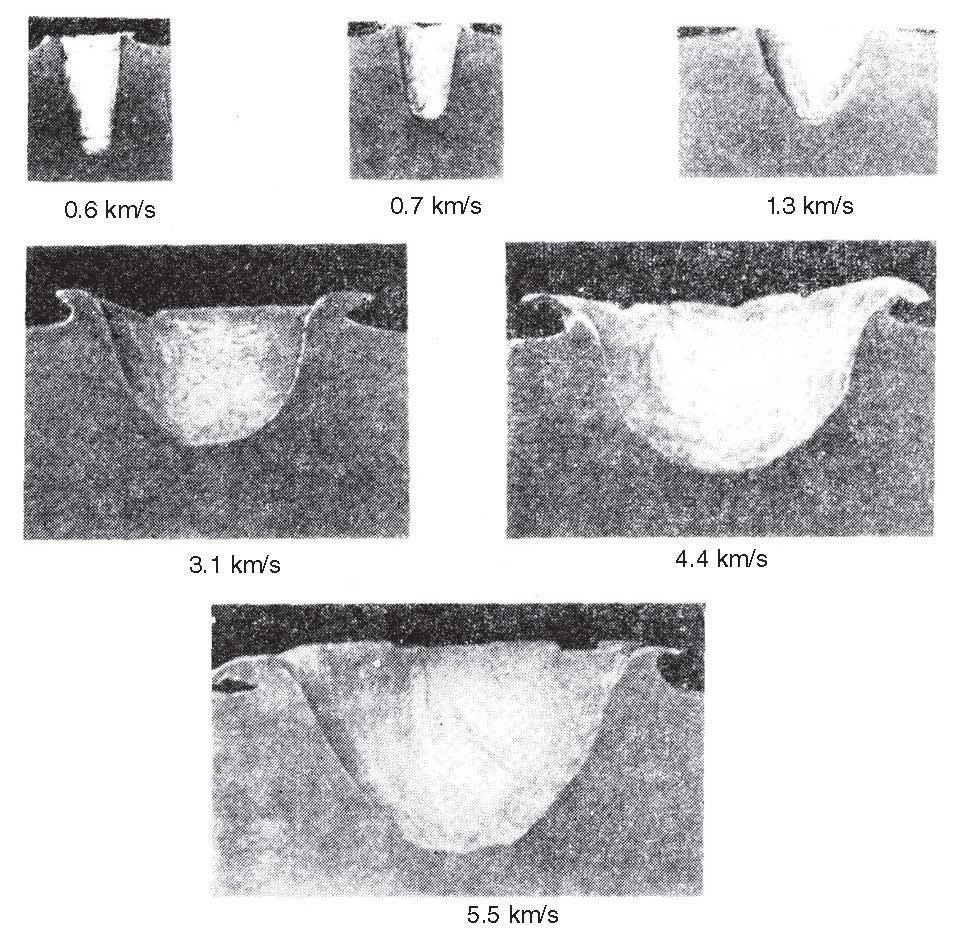
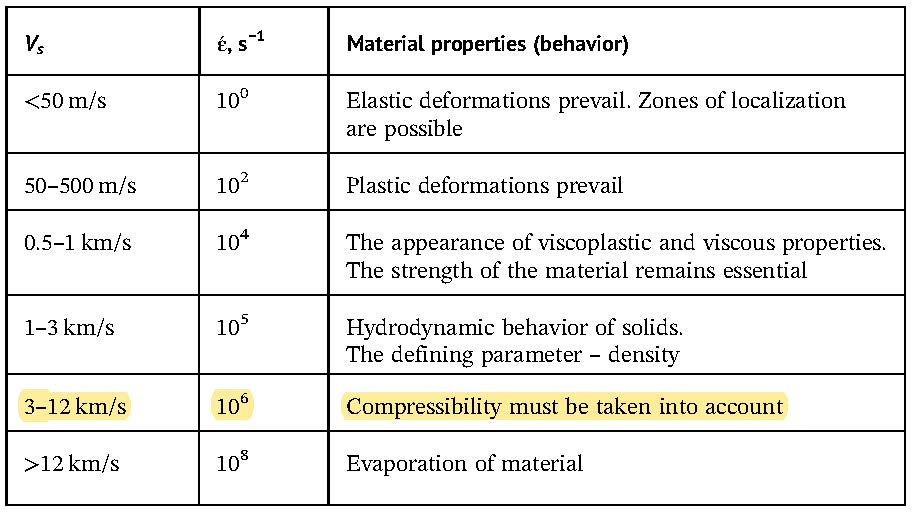
How Oreshnik may be intercepted? Certain circles may say that PAC-3 and THAAD can do that and that is the reason why the Ukrainian leadership immediately requested THAAD. One thing is sure: there are only 7 batteries - Guam, South Korea, Israel ad the rest in the continental US. So there is no chance that anytime soon or ever THAAD will be supplied to Ukraine. Full stop.
What happens with Oreshnik submunitions during the re-entry is that they are subject to random motion fluctuations. The re-entry vehicle has a high ballistic coefficient and it is executing hypersonic evasive maneuvers. Combining the speed with evasive maneuvers creates impossible conditions for interception meaning that hit-to-kill interceptors can't maneuver sufficiently to achieve a direct hit. Highly likely these attacks will be simultaneous with saturation attacks on the area and interceptor batteries.
Conclusion
Oreshik's attack on Yuzhmash was a compelling and clear message to the West. The effects on the target are a closely guarded secret, and there have been attempts to downgrade the missile itself and its effects, as there have been so many times before. This message was carefully calculated to avoid an open clash with the current US administration and provoke any retaliation from them. European partners, predominantly the UK and France, are just shadows of the former colonial powers led by incompetent leaders who still live in the times of empires and the "diplomacy of battleships" and were disconnected from reality. This message by President Putin is clear: stop it, or there will be consequences.
Nobody can say for sure what may happen down the road, but there is a space for hypothetical scenarios. One possibility is that those enterprises that produce Storm Shadow and SCALPs are now well within the Oreshnik range. Just two missiles are enough to render them inoperable indefinitely. The attacks may come during the night to avoid any civilian casualties. These enterprises do not work 24/7.
NATO logistics hubs and depots are also within range. Oreshniks may not even be necessary if sabotage happens, but leaders of those ex-colonial states have a chance to steer away from WW3, which is just around the corner. The next few months until Biden's administration is gone will be critical.
In the meantime, Oreshniks will be manufactured, and targets will be constantly updated.
[i] Edited by Piquet (EditPiquet@gmail.com)
References
Rockets and Missiles Over Ukraine, Frontline books
И. А. БАЛАГАНСКИЙ: ДЕЙСТВИЕ СРЕДСТВ ПОРАЖЕНИЯ И БОЕПРИПАСОВ, НОВОСИБИРСК
I.V. Balagansky: Damaging Effects of Weapons and Ammunition, Willey
G.F Kinney and K.G. Graham, Explosives Shock in Air
S. Jaramaz, Physics of Explosion
Cratering by Explosion, Compendium
RAND: Hypersonic Missile Nonproliferation: Hindering the Spread of a New Class of Weapons
https://www.rand.org/content/dam/rand/pubs/research_reports/RR2100/RR2137/RAND_RR2137.pdf
I.V. Balagansky: Damaging Effects of Weapons and Ammunition, Willey
Ibid.
Ibid.
Ibid.
https://impact.uwo.ca/impact-craters/products-of-impact-crater/
If you like the article (and much more articles regarding military subjects will come) you can buy me a coffee:
https://www.buymeacoffee.com/mmihajloviW

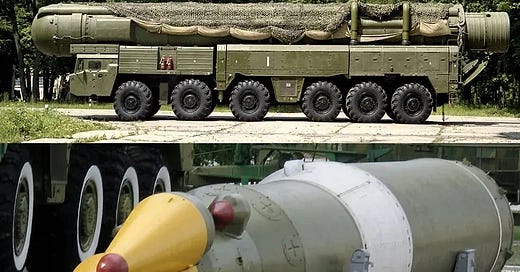



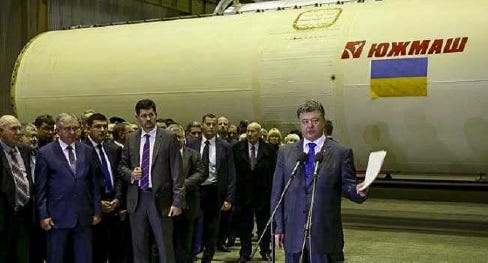



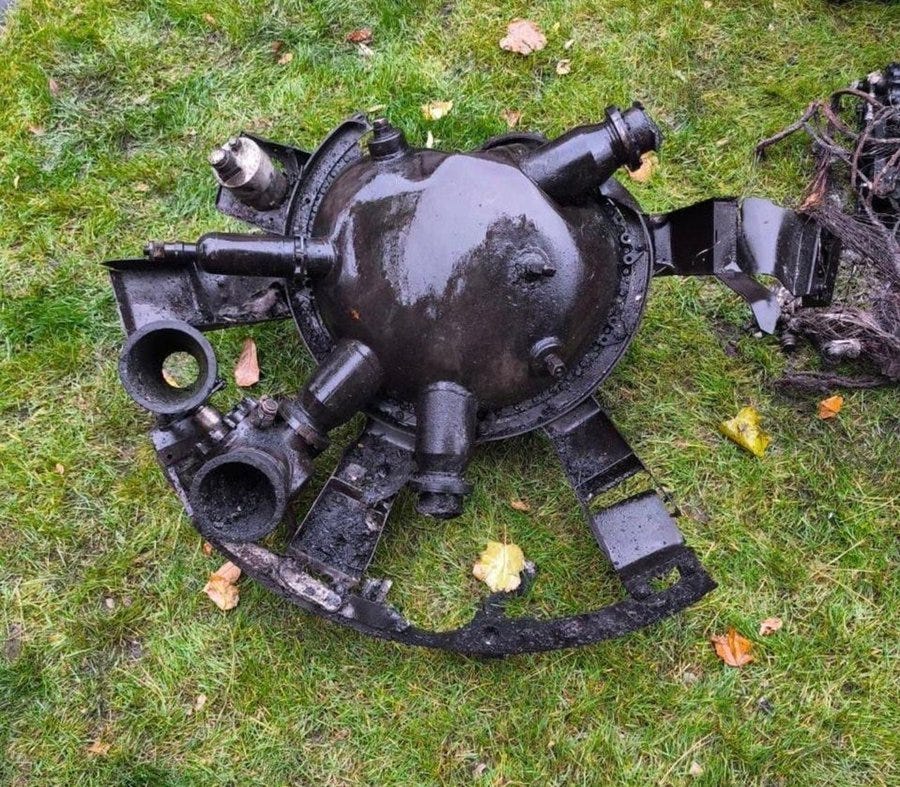
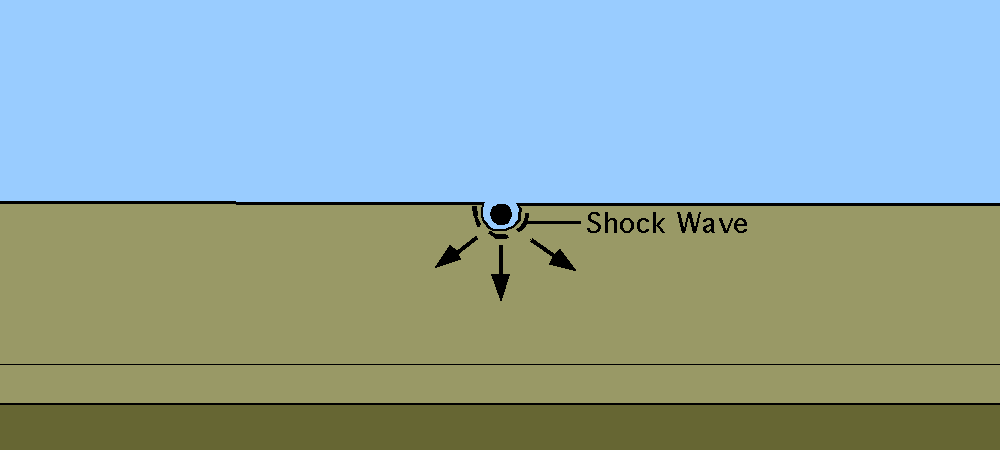
Thanks for the technical explanation of the Rayleigh wave; I have been suitably educated. It's interesting to see conflicting US messaging; it is hypersonic, no it's not hypersonic. Will they heed the message? That's the quadrillion dollar debt question.
Hi Mike,
when you look at the satellite picture a bit more towards the south - you will likely see a sparsely built up area, as it is typical not for city centers and industry, but for military industrial enterprises handling explosives and the like. I'd say this is the place with the missile building, storage, and the bunkers. The industrial area you pointed out, however, is likely somehow connected underground.
As for the renaming - Yuzhmash is an akronym from a full SOUTHern MACHine building corporation. Instead of Russian Yuzhnoy for Southern (the Yug from Yugoslavia is a close cognate) they replaced it with Ukrainian word for Southern - which refers the position of the sun at midday - Half-Day - as in Polish, for example.
"Military summary" showed yesterday (from somewhere) a satellite view for BDA from before and after. But, as usually for BDA assesments from the West - this is utter fake and shows the same picture with some filters and added "damage" (shadows same direction and length, trees still in green).
The naming of oreshnik (hazel) is in line with other tree/shrub names of such missiles, e.g. "topol" (poplar), "kedr" fits too (Siberian pine) - may be next time